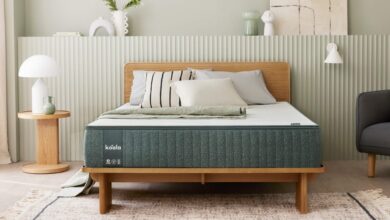
Clean up your air: Prioritise indoor air quality
Did you know that the amount of CO2 in venues often exceeds the maximum acceptable standard?
Elevated CO2 in a venue is an invisible threat that can negatively impact your guest’s health, it can trigger headaches, cause lethargy and also reduce staff productivity.
The amount of CO2 in a venue often exceeds the maximum acceptable standard, let’s look at why it’s so important to prioritise clean air.
Our latest AccomNews print issue is available now. Read it HERE
Since the onset of COVID, it has been a top priority to ensure venues have clean, fresh air with viral and bacterial protection for visitors. Another threat to health is mould, which is prevalent in tropical climates and all damp and humid environments with poor ventilation.
It is important that you do not wait until you receive guest or staff complaints before you get the air quality of your hospitality venues and accommodations tested.
What are the main causes of poor air quality in a hospitality environment?
- Poor building design that doesn’t maximise airflow, and lack of ventilation.
- Overcrowded indoor spaces.
- Locked windows when adverse seasonal weather discourages open windows.
- Air conditioning systems that do not provide adequate filtration and protection against viruses.
- Poor management of the indoor environment.
Given the powerful incentives to improve indoor air quality, what are some of the solutions available?
AccomNews consulted San-Air, an industry supplier that specialises in indoor air quality, HVAC, refrigeration, mould, bacteria and virus remediation.
Director Daniel Massaioli (BSC 1982, UNSW Pure and Applied Chemistry) explained the challenges of providing clean air in accommodation and hospitality environments.
He said: “There are many methods espoused by the air handling industry claiming to be the ‘best indoor air quality’ solution. But after years of industry exposure, I believe there is no ‘one’ mechanical filtration system that is the perfect solution because there is always mitigation, furthermore there are consumable product methods that can offer whole indoor area treatment.
“I believe a combination of the two methods yields the best air quality outcome.”
Why?
“Because germs travel attached to specks of dust of many forms, and filtration or other mechanical means can only stop some of it.
“However, there is well-validated evidence that evaporative gel is effective on mould, bacteria, and viruses in under 10 minutes. This type of product is proven safe, and requires no extra energy because it creates a treatment envelope in the whole of the indoor area.”
Is it sufficient to just provide good indoor ventilation?
“Good ventilation alone benefits the occupants of indoor space by providing more breathable air. But good ventilation to dilute indoor concentrations of germs is, in my opinion, false security. It’s clear to me that better ventilation is important, but it doesn’t lead to healthier, cleaner indoor air.”
Really?
“Yes. Interestingly, we have just received results from an independent laboratory overseas, using evaporative gel in an area which was severely airborne mould contaminated. It controlled the area very well. Furthermore, the test data showed that the outdoor area was ten times dirtier than the controlled indoor air!
“Therefore, if there had been more ventilation, the air would have just been more contaminated. Most of the issues with indoor environments are caused by new air coming into the area, as well as what the indoor space is used for.
What about humidity and mould?
“There are several ways that humidity is controlled in indoor environments, from the moisture absorbing pellets to the machines that precipitate water out of the air. However, science knows that humidity control alone does not kill mould. Rather, the humidity control is generally slow in setting, giving mould time to go dormant and survive the drop in moisture content.
“We have witnessed a massive amount of mould thrive in low humidity environments created by taking the temperature to below -7. Terrestrial germs are adaptive and will survive in hot and cold climates. Mould, bacteria, and viruses have been found in thousand-year-old ice, dormant, and came alive when defrosted. Keeping moisture under control does have some benefits but it does not prevent mould. It just causes it to go dormant, waiting to grow once conditions change.
Finally, what are your tips for cleaning and maintaining systems?
“As with everything, a good regular maintenance program is a must.
“For systems that control the indoor air quality, I would advise a service every three months. High volume or high occupancy areas which are controlled with an air handler and purification equipment need to be serviced/cleaned monthly.
“However, using a ‘whole of area’ treatment gel product will help lengthen the amount of time between mould removal treatments.”

AccomNews is not affiliated with any government agency, body or political party. We are an independently owned, family-operated magazine.







